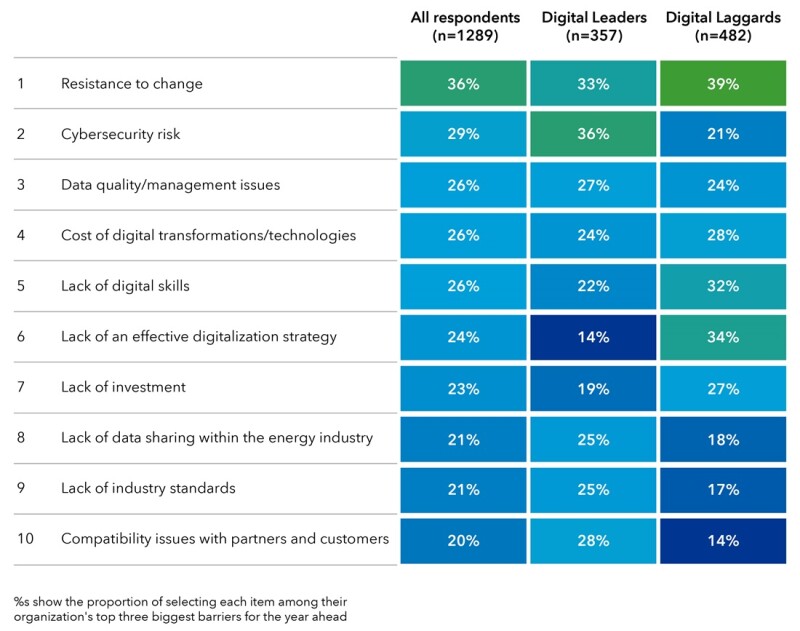Nearly half of senior energy professionals plan to integrate artificial-intelligence (AI) -driven applications into their operations in the coming year, according to a new report from DNV. DNV’s latest Energy Industry Insights special report, Leading a Data-Driven Transition, draws on the 14th annual survey of nearly 1,300 senior professionals, alongside in-depth interviews with industry leaders and experts.
Among other things, the survey highlights digitalization’s crucial role in transforming the energy sector, affecting generation, transmission, distribution, and consumption. AI-driven technologies such as smart grids, predictive maintenance, and real-time data analytics are already taking hold in the energy sector and promise to revolutionize it further in the coming years. However, success in digitalization requires innovation, strategic vision, and leadership, making it as urgent as decarbonization, especially given that a timely and effective energy transition will be impossible without it.
Digital Leaders vs. Digital Laggards
The survey reveals a stark contrast between what it calls “digital leaders” and “digital laggards.” While 28% of respondents identified their organizations are excelling in digitalization and showing greater optimism about achieving revenue, profit, and decarbonization goals, 37% reported the opposite.
Leaders are significantly ahead in using digital technologies for decarbonization and energy transition, with 68% having quality data and 80% already benefiting from digital technologies, compared with 21% and 33% of laggards, respectively.
On emerging technologies in general — such as AI (27%) and digital twins (34%) — around one-third of leaders say they are live or advanced, compared with just single-digit percentages for laggards. In fact, most laggards report being in the early development stages (planning or piloting) of all the key technologies DNV asked about (Fig. 1).

AI and Data: Driving the Future
Almost 50% of the 1,300 senior professionals who responded to DNV’s survey said they plan to integrate AI-driven applications into their operations in the coming year, with digital leaders leading the charge.
The top three most effective data-driven applications for digital leaders are optimizing processes, integrating systems and databases, and automating operations (Fig. 2). However, 50–60% of leaders also report major or massive effects from a wide range of other data-driven innovations, from predictive maintenance to supply chain management. Laggards trail across the board, with the largest shortfalls in key areas, such as the integration of systems and databases, automating operations, and empowering consumers or customers.

The value of applications is often diluted by problems involving the integration of systems and databases. Paula Doyle, chief digital officer at Aker BP, said, “Typically, companies have a lot of legacy systems where data is locked into the application.” She went on to explain that it’s necessary to “liberate and contextualize data from industrial systems to make it accessible to both humans and machines [for] better and faster decisions.”
AI and advanced data analytics are pivotal in this transformation. The report estimates that, by 2050, AI will support a $1.3 trillion decrease in clean energy generation costs and reduce grid equipment costs by $188 billion. Overall, power system costs will be reduced by 6–13%. AI is now an indispensable building block of energy systems, with 47% of respondents saying their organization will use AI-driven applications in their operations in the year ahead — a figure climbing to as high as 69% for digital leaders (Fig. 3).

Doyle highlighted the challenge of becoming more data-driven, emphasizing the need for a specialized workforce to effectively track and manage data. “The efficient automation of data delivery becomes extremely important,” she said, “and this is where AI can play a key role.”
Challenges and Opportunities
Despite the progress, significant challenges remain. Resistance to change is a major barrier for both leaders and laggards, compounded by the need to balance safety and agility in an industry where failure is not an option (Fig. 4).

Digital leaders stand out from the rest by placing digitalization at the center of their organization’s strategy and using this to improve business performance. Almost all (90%) said that digitalization is central to their organization’s strategy, compared with just 39% of laggards.
The Path Forward
“As the energy sector navigates the twin challenges of digitalization and decarbonization, the ability to adapt and innovate will define success,” said Lucy Craig, director of growth, innovation, and digitalization for energy systems at DNV. “DNV’s survey identifies the key challenges facing organizations in harnessing the power of digital technologies and also highlights the opportunities that come with change. Digital leaders distinguish themselves by embedding digitalization at the core of their strategy, fostering a culture of innovation, and investing in the right technologies. Over the next year, these organizations are poised to build on their progress and maintain their advantage by focusing on further digitalization and cyber-resilience.”

